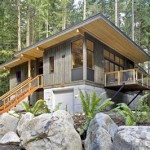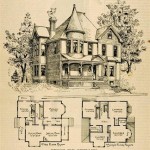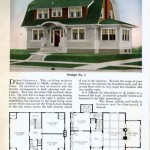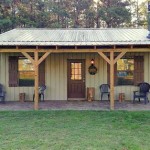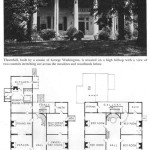House floor plan designs refer to the blueprints and schematics that outline the layout and arrangement of rooms, spaces, and other structural elements within a residential building. These designs serve as the foundation for the construction and organization of homes, enabling architects, builders, and interior designers to plan and optimize the functionality, flow, and aesthetics of the living space.
Floor plan designs are instrumental in creating homes that meet the specific needs and preferences of individuals and families. For instance, a single-family home with a traditional floor plan typically includes a living room, dining room, kitchen, bedrooms, and bathrooms arranged in a logical and efficient manner. By carefully considering the placement and size of these spaces, designers can maximize the home’s potential for comfort, convenience, and enjoyment.
In the following sections, we will delve into the various types of house floor plan designs, exploring their advantages, disadvantages, and considerations for choosing the right design for your home building or remodeling project.
When designing the floor plan for your house, there are several key points to consider to ensure that your home meets your needs and preferences. Here are 9 important points to keep in mind:
- Functionality:
- Flow:
- Aesthetics:
- Space planning:
- Storage:
- Natural light:
- Energy efficiency:
- Budget:
- Future needs:
By carefully considering these points during the design process, you can create a house floor plan that is both functional and beautiful, and that meets the unique needs of your family.
Functionality:
Functionality is one of the most important considerations when designing a house floor plan. The layout of your home should allow you to move around easily and comfortably, and it should provide spaces that meet your specific needs.
When considering functionality, there are a few key things to keep in mind:
- Traffic flow: The flow of traffic through your home should be smooth and efficient. You should be able to move from one room to another without having to backtrack or go through unnecessary spaces.
- Adjacency: The rooms in your home should be arranged in a way that makes sense. For example, the kitchen should be close to the dining room, and the bedrooms should be close to the bathrooms.
- Space planning: The size and shape of each room should be carefully considered. You want to make sure that each room is large enough to accommodate its intended use, but not so large that it feels empty or overwhelming.
- Storage: Every home needs adequate storage space. When designing your floor plan, be sure to include closets, cabinets, and other storage solutions in each room.
By carefully considering functionality, you can create a house floor plan that meets the needs of your family and lifestyle.
Paragraph after details:
In addition to the points discussed above, there are a few other things to keep in mind when considering functionality. For example, you may want to think about the following:
- Universal design: If you or someone in your family has mobility issues, you may want to consider incorporating universal design features into your home. This could include things like wider doorways, ramps, and accessible showers.
- Smart home features: Smart home features can make your life easier and more convenient. When designing your floor plan, consider including things like smart lighting, smart thermostats, and smart security systems.
- Outdoor living space: If you enjoy spending time outdoors, you may want to consider incorporating an outdoor living space into your home. This could include a patio, deck, or screened porch.
By taking the time to consider functionality, you can create a house floor plan that is both beautiful and practical.
Flow:
Flow refers to the way in which people move through a space. When designing a house floor plan, it is important to consider how people will move from one room to another, and how they will use the space. A well-designed floor plan will have a smooth and efficient flow, which will make the home more comfortable and enjoyable to live in.
There are a few key things to keep in mind when considering flow:
- Circulation: The circulation paths in your home should be clear and unobstructed. People should be able to move around easily without having to squeeze through narrow doorways or navigate around furniture.
- Adjacency: The rooms in your home should be arranged in a way that makes sense. For example, the kitchen should be close to the dining room, and the bedrooms should be close to the bathrooms.
- Transitions: The transitions between rooms should be smooth and seamless. There should be no awkward steps or changes in level.
By carefully considering flow, you can create a house floor plan that is both functional and beautiful.
Paragraph 2:
In addition to the points discussed above, there are a few other things to keep in mind when considering flow. For example, you may want to think about the following:
- Traffic patterns: Observe how people move through your current home. This will help you to identify any areas where the flow is inefficient or awkward.
- Future needs: Think about how your needs may change in the future. For example, if you are planning to have children, you may want to design a floor plan that includes a playroom or a dedicated study space.
- Universal design: If you or someone in your family has mobility issues, you may want to consider incorporating universal design features into your home. This could include things like wider doorways, ramps, and accessible showers.
Paragraph 3:
By taking the time to consider flow, you can create a house floor plan that is both beautiful and practical. A well-designed floor plan will make your home more comfortable and enjoyable to live in, and it will also increase its value.
Paragraph after details:
Here are some examples of well-designed floor plans that have good flow:
- Open floor plans: Open floor plans are characterized by large, open spaces that are not divided by walls. This type of floor plan is popular because it creates a sense of spaciousness and allows for easy movement between different areas of the home.
- Split-level floor plans: Split-level floor plans are characterized by different levels that are connected by stairs. This type of floor plan can be a good option for homes with sloping lots or for homes that need to accommodate a large number of people.
- Ranch-style floor plans: Ranch-style floor plans are characterized by a single level with all of the rooms on the same floor. This type of floor plan is popular because it is easy to navigate and is suitable for people of all ages.
When choosing a floor plan, it is important to consider your own needs and preferences. There is no one-size-fits-all solution, so it is important to find a floor plan that works for you and your family.
Aesthetics:
Aesthetics is another important consideration when designing a house floor plan. The way your home looks and feels can have a big impact on your mood and well-being. A well-designed floor plan will create a home that is both beautiful and comfortable to live in.
There are a few key things to keep in mind when considering aesthetics:
- Style: The style of your home should reflect your personal taste and preferences. There are many different styles to choose from, so take your time to find one that you love.
- Color: The colors you choose for your home can have a big impact on the overall look and feel of the space. Choose colors that you find calming and inviting.
- Lighting: Lighting is an essential element of any interior design scheme. Use natural light whenever possible, and supplement with artificial light when necessary.
- Furniture: The furniture you choose for your home should be both stylish and comfortable. Choose pieces that complement the overall style of your home and that you enjoy spending time in.
By carefully considering aesthetics, you can create a house floor plan that is both beautiful and functional. A well-designed floor plan will make your home a place where you love to spend time.
Paragraph 2:
In addition to the points discussed above, there are a few other things to keep in mind when considering aesthetics. For example, you may want to think about the following:
- Curb appeal: The curb appeal of your home is the first impression that people will have of your home. Make sure that your home’s exterior is well-maintained and inviting.
- Interior design: The interior design of your home should reflect your personal style and preferences. Choose a style that you love and that makes you feel comfortable.
- Outdoor living space: If you enjoy spending time outdoors, you may want to consider incorporating an outdoor living space into your home. This could include a patio, deck, or screened porch.
Paragraph 3:
By taking the time to consider aesthetics, you can create a house floor plan that is both beautiful and practical. A well-designed floor plan will make your home a place where you love to spend time, and it will also increase its value.
Paragraph 4:
Here are some examples of well-designed floor plans that have good aesthetics:
- Craftsman-style homes: Craftsman-style homes are characterized by their natural materials, exposed beams, and inviting front porches. This style of home is popular because it is both beautiful and functional.
- Modern farmhouse homes: Modern farmhouse homes are characterized by their simple lines, open floor plans, and rustic details. This style of home is popular because it is both stylish and comfortable.
- Mediterranean-style homes: Mediterranean-style homes are characterized by their whitewashed walls, red tile roofs, and arched doorways. This style of home is popular because it is both beautiful and exotic.
When choosing a floor plan, it is important to consider your own needs and preferences. There is no one-size-fits-all solution, so it is important to find a floor plan that works for you and your family.
Paragraph after details:
By following the tips in this article, you can create a house floor plan that is both functional and beautiful. A well-designed floor plan will make your home a place where you love to spend time, and it will also increase its value.
Space planning:
Space planning is the process of arranging the different spaces in a home in a way that is both functional and efficient. When space planning, there are a few key things to keep in mind:
- Room size: The size of each room should be carefully considered. You want to make sure that each room is large enough to accommodate its intended use, but not so large that it feels empty or overwhelming.
- Room shape: The shape of each room can also affect its functionality. For example, a square room is more versatile than a long, narrow room.
- Traffic flow: The flow of traffic through your home should be smooth and efficient. You should be able to move from one room to another without having to backtrack or go through unnecessary spaces.
- Furniture placement: The placement of furniture can also affect the functionality of a room. Make sure that furniture is arranged in a way that allows for easy movement and conversation.
By carefully considering space planning, you can create a house floor plan that is both functional and beautiful. A well-designed floor plan will make your home a place where you love to spend time, and it will also increase its value.
Storage:
Storage is an essential consideration when designing a house floor plan. Every home needs adequate storage space to keep belongings organized and out of the way. When planning for storage, there are a few key things to keep in mind:
- Built-in storage: Built-in storage is a great way to maximize space and keep belongings organized. Consider incorporating built-in shelves, drawers, and cabinets into your floor plan.
- Closets: Closets are an essential storage solution for bedrooms, hallways, and other areas of the home. Make sure to include enough closets in your floor plan to accommodate your storage needs.
- Pantry: A pantry is a great way to store food and other kitchen essentials. If you have the space, consider including a pantry in your kitchen floor plan.
- Attic and basement: The attic and basement can be great places to store seasonal items and other belongings that you don’t need to access on a regular basis.
By carefully considering storage, you can create a house floor plan that is both functional and beautiful. A well-designed floor plan will make your home a place where you love to spend time, and it will also increase its value.
Natural light:
Natural light is an important consideration when designing a house floor plan. Natural light can help to improve your mood, boost your energy levels, and reduce your risk of developing certain health problems. When designing your floor plan, there are a few key things to keep in mind to maximize natural light:
1. Window placement: The placement of windows is critical to maximizing natural light. When placing windows, consider the following:
- The size of the windows.
- The height of the windows.
- The orientation of the windows.
2. Skylights: Skylights are a great way to add natural light to dark areas of your home, such as hallways and bathrooms. Skylights can also be used to create a more dramatic effect in rooms with high ceilings.
3. Solar tubes: Solar tubes are a type of skylight that uses a reflective tube to direct sunlight into a room. Solar tubes are a good option for homes that have limited roof space or for homes that are located in areas with limited sunlight.
4. Light shelves: Light shelves are a type of window that is designed to reflect sunlight into a room. Light shelves can be used to brighten up dark areas of a room or to create a more diffused light.
By carefully considering natural light, you can create a house floor plan that is both functional and beautiful. A well-designed floor plan will make your home a place where you love to spend time, and it will also increase its value.
Energy efficiency:
Energy efficiency is an important consideration when designing a house floor plan. An energy-efficient home can save you money on your energy bills and help to reduce your environmental impact. When designing your floor plan, there are a few key things to keep in mind to improve energy efficiency:
- Orientation: The orientation of your home can have a big impact on its energy efficiency. In the Northern Hemisphere, homes that are oriented to the south will receive more sunlight than homes that are oriented to the north. This can help to reduce your heating costs in the winter.
- Window placement: The placement of windows can also affect your home’s energy efficiency. Windows that are placed on the south side of your home will allow more sunlight to enter, which can help to heat your home in the winter. Windows that are placed on the north side of your home will help to keep your home cool in the summer.
- Insulation: Insulation is an important part of any energy-efficient home. Insulation helps to keep your home warm in the winter and cool in the summer. When choosing insulation, be sure to look for products that have a high R-value. The higher the R-value, the better the insulation.
- Air sealing: Air sealing is another important part of an energy-efficient home. Air sealing helps to prevent air from leaking in and out of your home. This can help to reduce your heating and cooling costs.
By carefully considering energy efficiency, you can create a house floor plan that is both functional and beautiful. A well-designed floor plan will make your home a place where you love to spend time, and it will also increase its value.
Budget:
Budget is an important consideration when designing a house floor plan. The cost of building a home can vary depending on a number of factors, including the size of the home, the materials used, and the complexity of the design. It is important to set a realistic budget before you begin designing your home so that you can avoid overspending.
There are a few things you can do to save money on your house floor plan. First, consider the size of your home. The larger the home, the more it will cost to build. If you are on a tight budget, you may want to consider a smaller home.
Second, choose materials carefully. Some materials are more expensive than others. For example, hardwood floors are more expensive than laminate floors. If you are on a budget, you may want to choose less expensive materials.
Third, keep the design simple. Complex designs can be more expensive to build. If you are on a budget, you may want to choose a simpler design.
By following these tips, you can create a house floor plan that meets your needs and fits your budget.
Future needs:
When designing your house floor plan, it is important to consider your future needs. Your needs may change over time, so it is important to design a floor plan that can adapt to your changing needs.
- Changing family size: If you are planning to have children, you may want to design a floor plan that includes a playroom or a dedicated study space. If you are planning to downsize in the future, you may want to design a floor plan that includes a first-floor master suite.
- Aging in place: If you are planning to age in place, you may want to design a floor plan that includes features such as wider doorways, ramps, and accessible showers.
- Changing lifestyle: Your lifestyle may change over time. For example, you may decide to start a home-based business or you may decide to take up a new hobby. When designing your floor plan, consider how your lifestyle may change in the future and design a floor plan that can accommodate your changing needs.
- Resale value: When designing your floor plan, it is important to consider the resale value of your home. A well-designed floor plan will make your home more appealing to potential buyers and will help you to get a higher price for your home when you sell it.
By carefully considering your future needs, you can create a house floor plan that will meet your needs for years to come. A well-designed floor plan will make your home a place where you love to spend time, and it will also increase the value of your home.









Related Posts


